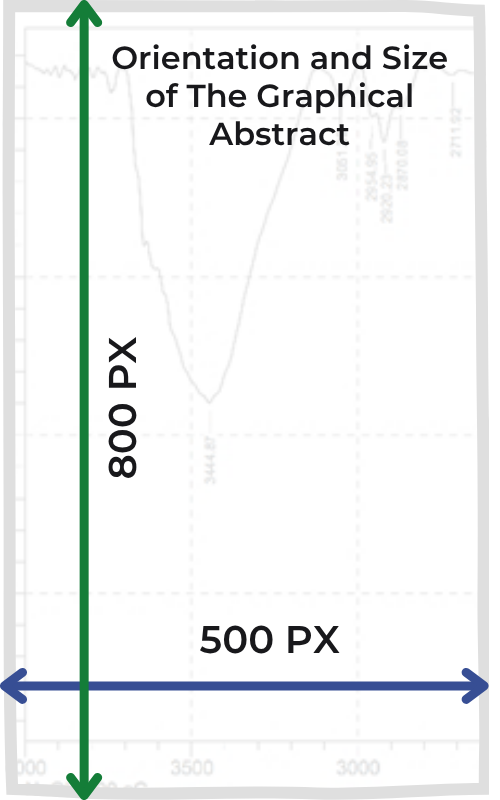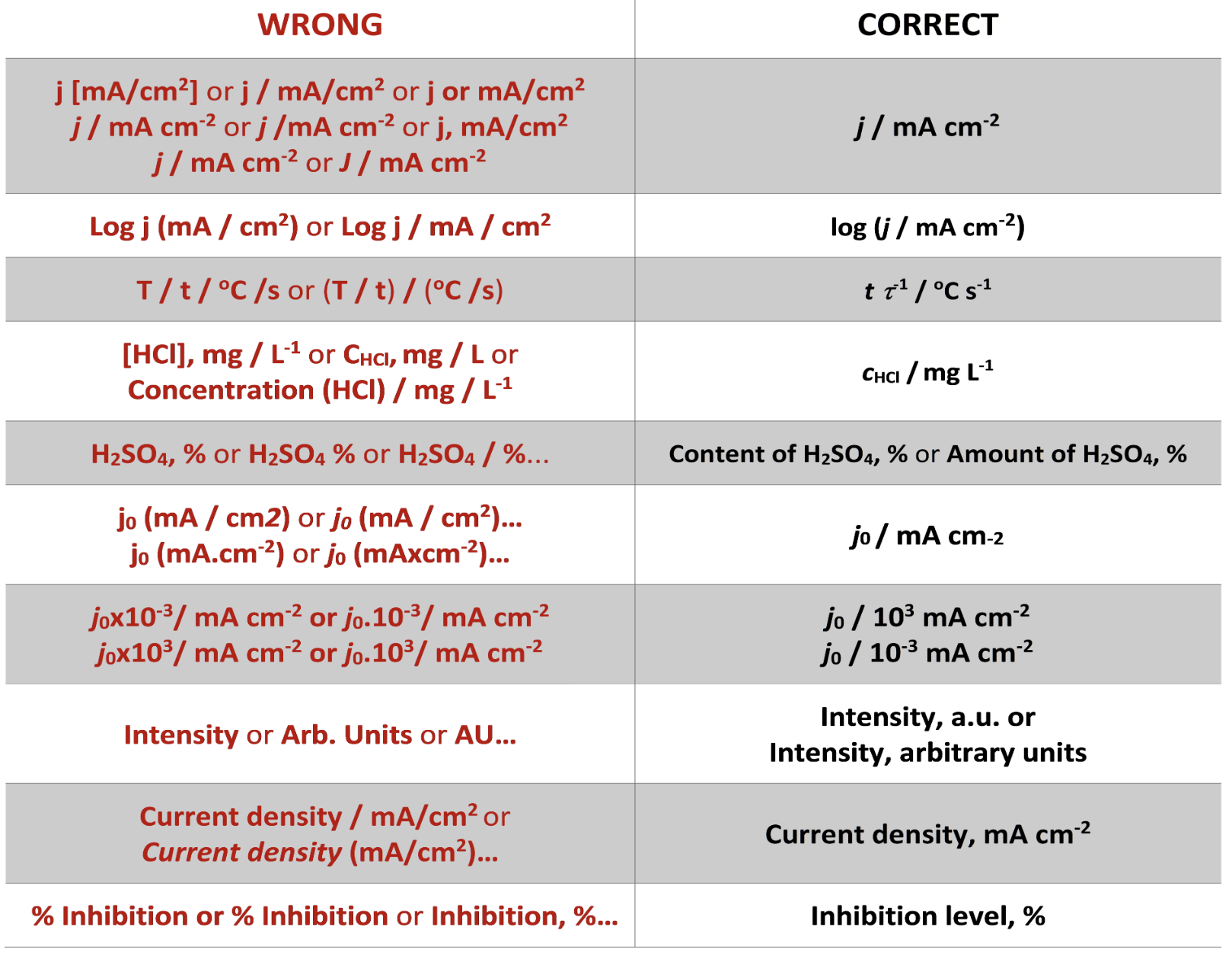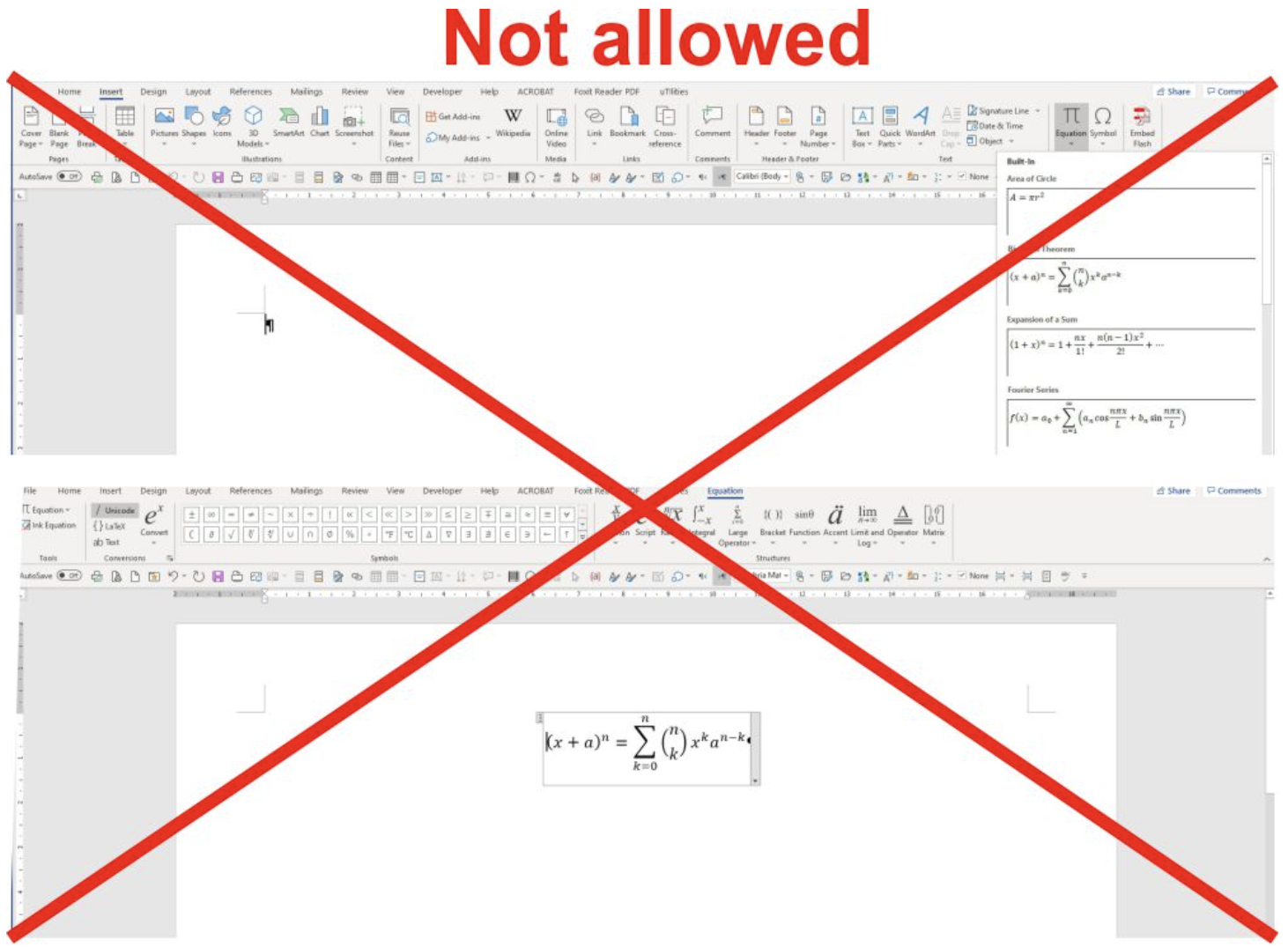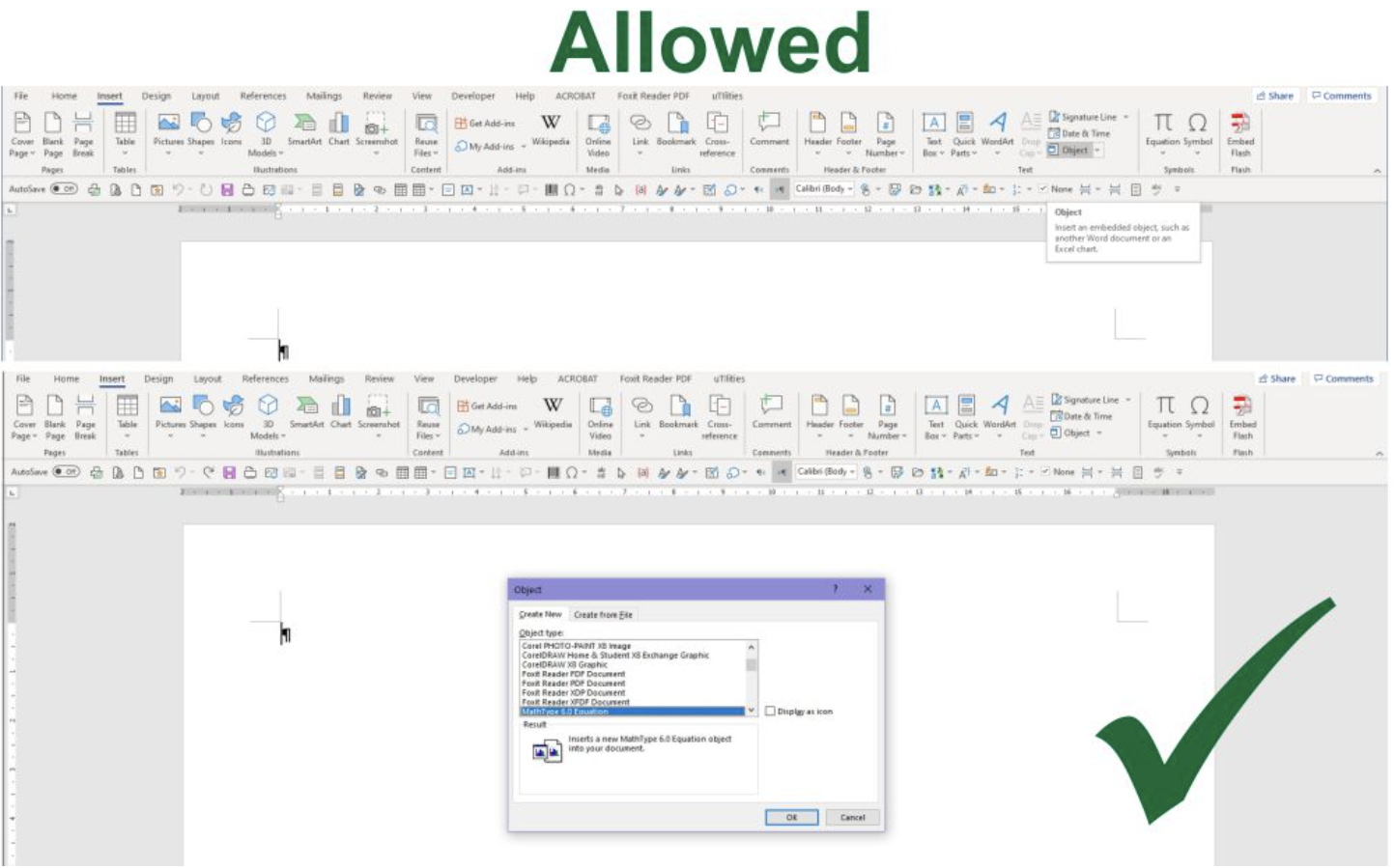Instructions for Authors
✨ATTENTION!
Before submitting your manuscript to the Journal of Green Chemical and Environmental Engineering (JGCEE), authors are required to download and carefully read the Instructions for Authors and the Artwork Guidelines. Please make sure to use the official JGCEE Template to prepare your manuscript according to the journal's formatting standards.
If the manuscript is not fully prepared in accordance with these guidelines, it will be returned to the author as a NON-COMPLIANT SUBMISSION and must be resubmitted as a new manuscript.
The preparation of the manuscript using the official JGCEE template is strongly recommended to ensure consistency with the journal's formatting and submission standards.
DOWNLOAD THE JGCEE TEMPLATE NOW!
DOWNLOAD SUBMISSION TUTORIAL NOW!
✨IMPORTANT NOTICE
The Journal of Green Chemical and Environmental Engineering cannot influence the speed of the editorial process or the time required to assign final page numbers. Once your manuscript has undergone peer review and has been accepted for publication by the editorial board, it will be assigned a DOI number and published in the Accepted Manuscripts section. The document is accessible to anyone with a valid DOI link.
This version of the manuscript is as valid as the final printed version and may be cited using the author’s name, journal name, year of acceptance, and DOI. The assigned DOI serves as official evidence that the manuscript will be included in a forthcoming printed issue of the journal.
✨Instructions for Manuscript Preparation
To maintain the quality and consistency of submitted manuscripts, authors are expected to carefully follow the formatting and submission guidelines outlined below. These include the required structure and components of the article, page and font specifications, proper formatting for tables and figures, and guidelines for writing conclusions and acknowledgments. Authors must also adhere to proper referencing practices using the IEEE style, supported by a reference manager (e.g., Mendeley, EndNote, or Zotero), and ensure that all cited sources are recent and relevant. Additionally, all manuscripts must undergo plagiarism checking through Turnitin, with a similarity score not exceeding 20%. Please review and revise the manuscript as needed before final submission to ensure compliance with these standards.
-
Manuscript must consist of the following scientific article components (subheadings in sequence), i.e.: (a) Article Title, (b) Author's Name (without title), (c) Author’s Affiliate Address, (d) Abstract and Keyword, (e) Introduction, (f) Methodology, (g) Results and Discussion, (h) Conclusion, (i) Acknowledgments (if any), and (j) References.
-
Manuscript can be written in English with a maximum of 15 pages including references. Manuscript should be written according to this manuscript template in a ready-to-print form.
-
Manuscript should be typed with A4 (210 x 297 mm) and be written using Arial Hebrew font according to manuscript template.
-
Please submit tables as editable text and not as images. The table is placed next to the relevant text embedded directly in the manuscript. Number tables consecutively in accordance with their appearance in the text and place the caption above the table.
-
Figures are prepared using uniform letter and readable size. Present figures and their captions embedded directly in the manuscript. The caption is numbered in sequence and placed below the figure. You are urged to provide good quality of figure with high resolution format e.g. i) vector graphics (EPS, EMF, PDF), ii) Color or grayscale photographs (halftones), keep to a minimum of 300 dpi (TIFF or JPEG). Please do not supply figures with too low resolution like GIF, BMP and WPG.
-
The conclusion contains a summary of the description of the results and discussion with reference to the purpose of research. Advice is based on research findings that have been discussed. Suggestions can refer a practical action, the development of new theories and/or studies.
-
If any, acknowledgement can be given to the parties who provide research grant or financial assistance and support, the support of sections and institutions, or to the professionals who contributed in the preparation of the report.
-
Or the bibliography, IEEE style is written according to the rules of writing. All references used in writing in the bibliography be numbered in accordance with the alphabetically, not the appearance of the article.
-
Referral source in the form of literature must be published 5-10 years. References used are the primary source in the form of research articles in journals or research reports, books or articles that are linked from the official source. To maintain the consistency of the way of reference, quoting and writing a bibliography we suggest using standard reference.
-
Using a reference manager application is very important to maintain consistency and accuracy of citations in your manuscript. If you don't already have an account with your preferred reference manager app (such as EndNote, Mendeley, or Zotero), please register on their official site. For example, for Mendeley, register here (https://www.mendeley.com/reference-management/reference-manager). The following is a tutorial on using Mendeley.
-
Authors are required to upload the prepared manuscript in PDF or DOC format to the Turnitin system via this link (https://www.turnitin.com/login_page.asp). Make sure the manuscript is complete and ready to be checked before uploading. The maximum similarity value allowed is 20%. Authors are expected to ensure that Turnitin checking results do not exceed this limit. If there are parts that are highly similar, please revise and correct them before resubmitting.
✨Graphical Abstract
Graphical abstract is a one-image file containing the main depiction of the authors work and/or conclusion and must be supplied along with the manuscript. It must enable readers to quickly gain the main message of the paper and to encourage browsing, help readers identify which papers are most relevant to their research interests.
Authors must provide an image that clearly represents the research described in the paper. The most relevant figure from the work, which summarizes the content, can also be submitted. The image should be submitted as a separate file in Online Submission.
Specifications: The graphical abstract should have a clear start and end, reading from top to bottom or left to right. Please omit unnecessary distractions as much as possible.
-
Image size: minimum of 500x800 pixels (WxH) and a minimum resolution of 300 dpi. If a larger image is sent, then please use the same ratio: 16 high x 10 wide. Please note that your image will be scaled proportionally to fit in the available window in TOC; a 150x240 pixel rectangle. Please be sure that the quality of an image cannot be increased by changing the resolution from lower to higher, but only by rescanning or exporting the image with a higher resolution, which can be set in the usual "settings" option.
-
Font: Please use Calibri and Symbol font with a large enough font size, so it is readable even from the image of a smaller size (150 x 240 px) in TOC.
- File type: JPG and PNG only.
No additional text, outline or synopsis should be included. Please do not use white space or any heading within the image.

Illustrations
Please note the following guidelines when preparing your figures or photos for submission:
-
Color and greyscale photos may also be submitted in JPG format.
-
Each file must not exceed a maximum size of 32 MB.
✨Cover letter
Manuscripts must be accompanied by a cover letter (strictly uploaded in Online Submission Form - Step 2) in which the type of the submitted manuscript and a warranty as given below are given. The Author(s) has(have) to warranty that the manuscript submitted to the Journal for review is original, has been written by the stated author(s) and has not been published elsewhere; is currently not being considered for publication by any other journal and will not be submitted for such a review while under review by the Journal; the manuscript contains no libellous or other unlawful statements and does not contain any materials that violate any personal or proprietary rights of any other person or entity. All manuscripts will be acknowledged on receipt (by e-mail).
For any difficulties and questions related to OnLine Submission Form, please refer to User Guide, Chapter Submitting an Article. If difficulties still persist, please contact JGCEE Editorial Office at ejournaljgcee@gmail.com
A MANUSCRIPT NOT PREPARED ACCORDING TO THESE INTRUCTIONS WILL BE RETURNED
FOR RESUBMITION WITHOUT BEING ASSIGNED A REFERENCE NUMBER.
✨Abstract
The abstract should be cohesive and adequate implying the research question and major findings as a standalone paragraph. No references or abbreviations are required in this section. Also, the abstract section should not be less than two hundred (200) words and does not exceed two hundred fifty (250) words. It should be placed under the title with a single space from the title. Avoid writing a long formula and define all symbols used in the abstract. The abstract should be a single paragraph with the following content: Background: highlight the targets of the research; Methods or process: concise description of the main processes or methods applied in the research work; Results: present the article's main findings or significant results and the author should be avoids the discussion of the results in the abstract; Conclusion: the main conclusions of the research work that can be drawn should be present without magnify the conclusions.
✨Keywords
Example : Biodiesel; Chlorella sp; Microwave; Transesterification; Charcoal. (Should be included in a separate paragraph, In alphabetical order, Maximum 5 keywords (words or phrases)).
✨Introduction
The rapid increase in energy consumption, especially in the transportation sector, has led to an energy crisis that has resulted in a decrease in fossil fuel supplies and an increase in environmental pollution [1]. The paper should be organized into logical parts or sections. Any subsection is given a brief numbered heading. The contents include the introduction that should clearly define the nature of the problem, and the references should be made to previously published papers. Theoretical, experimental, results, discussions and conclusions form the main sections of the paper. The theoretical section extends the analytical background of the article and develops a new formulation of the problem. Calculations are achieved here using the developed equations and the modifications should be pointed out. Depending on the suggested research methods, the experimental investigation is achieved, using the testing instruments or design and manufacturing a test rig. Materials and methods are detailed here. In the results and discussions section, the significance of the obtained results should be pointed out and the citations and the discussions of the kinds of literature should be avoided in this section. Sometimes results and discussions are combined in one section.
✨Research and Methodology
2.1 Materials The theoretical section extends the analytical background of the article and develops a new formulation of the problem. Calculations are achieved here using the developed equations and the modifications should be pointed out. They should be described with sufficient detail to allow others to replicate and build on published results. Please state manufacturer, city and country from where materials have been sourced.
2.2 Experiments The reactors consist of a centrally oriented conversion chamber within its’ set-up and possessing several small air holes at the base. The chamber houses the feed to be converted while the combustion fuel for heat generation occupies the ‘heating gap’ between the chamber and the reactor itself.
2.3 Product characterization The products (biomass biochar and hybrid biochar) recovered from the process were characterized to ascertain some of their properties using Scanning Electron Microscope with energy Dispersive X-ray Spectroscopy (SEM-EDS), Fourier Transform Infra-Red Spectroscopy (FTIR) and Brunauer-Emmet-Teller (BET) analysis. Scanning Electron Microscopy (SEM, Phenom proX, Phenom-World BV, Netherlands) was used to study the surface morphology of the particles of the biochar. A double adhesive was placed on a sample stub. The sample was sprinkled on the sample stub and subsequently taken to a sputter coater (quorum-Q150R Plus E) and coated with 5 nm of gold.
✨Results and Discussion
This section focused on the precise description of the experimental or theoretical results. The interpretation of the results and their conclusions should also present in this section. Authors should discuss the results and how they can be interpreted in viewpoint of research works found in the literature and of the working hypotheses. The results and their implications should be discussed in the broadest context possible.
✨Conclusion
A conclusion should point out the distinguished results of the achieved work and do not replicate the abstract. A conclusion may suggest recommendations for work extension and new applications (1 Paragraph).
✨Author contributions
Conceptualization, xx. and xx; data curation, X.X.; formal analysis, X.X.; investigation, X.X.; methodology, xx.; project administration, X.X, resources, X.X.; software, X.X.; supervision, X.X.; validation, X.X., Y.Y. and Z.Z.; visualization, X.X.; writing—original draft preparation, X.X.; writing—review and editing, X.X. All authors have read and agreed to the published version of the manuscript.
Conflict of Interest : The authors declare that there are no conflicts of interest.
✨Acknowledgement
Acknowledgments may be directed to individuals or institutions that have contributed to the research or a government agency, or This research received no specific grant from any funding agency in the public, commercial, or not-for-profit sectors.
✨Designation of Physical Quantities and Units
IUPAC recommendations for the naming of compounds should be followed. SI units, or other permissible units, should be employed. The designation of physical quantities must be in italic throughout the text (including figures, tables and equations), whereas the units and indexes (except for indexes having the meaning of physical quantities) are in upright letters. They should be in Times New Roman font. In graphs and tables, a slash should be used to separate the designation of a physical quantity from the unit (example: p / kPa, j / mA cm-2, T0 / K, t / h, ln (j / mA cm-2)…). Designations such as: p (kPa), t [min]…, are not acceptable. However, if the full name of a physical quantity is unavoidable, it should be given in upright letters and separated from the unit by a comma (example: Pressure, kPa; Temperature, K; Current density, mA cm-2…).. Please do not use the axes of graphs for additional explanations; these should be mentioned in the figure captions and/or the manuscript (example: "pressure at the inlet of the system, kPa" should be avoided). The axis name should follow the direction of the axis (the name of y‑axis should be rotated by 90°). Top and right axes should be avoided in diagrams, unless they are absolutely necessary.


For more details see:
https://iupac.org/wp-content/uploads/2019/05/IUPAC-GB3-2012-2ndPrinting-PDFsearchable.pdf
Latin words, as well as the names of species, should be in italic, as for example: i.e., e.g., in vivo, ibid, Calendula officinalis L., etc. The branching of organic compound should also be indicated in italic, for example, n-butanol, tert-butanol, etc.
Decimal numbers must have decimal points and not commas in the text, tables and axis labels in graphical presentations of results. Thousands are separated, if at all, by a comma and not a point.
Mathematical and chemical equations should be given in separate lines and must be numbered, Arabic numbers, consecutively in parenthesis at the end of the line. All equations should be embedded in the text except when they contain graphical elements (tables, figures, schemes and formulae). Complex equations (fractions, integrals, matrix…) should be prepared with the aid of the Microsoft Equation 3.0 (or higher) or MathType (Do not use them to create simple equations and labels). Using the Insert -> Equation option, integrated in MS Office 2010 and MS Office 2013, as well as insertion of equation objects within paragraph text IS NOT ALLOWED.


✨Submission and Referencing Guide
Publication Journal of Green Chemical and Environmental Engineering using online journal system (Journal of Green Chemical and Environmental Engineering). Steps describing how to create an account and use online journal system are provided in the following link Submission Tutorial
-
Author register in https://ejournal.candela.id/index.php/jgcee/user/register as an author
-
If any, acknowledgement can be given to the parties who provide research grant or financial assistance and support, the support of sections and institutions, or to the professionals who contributed in the preparation of the report.
-
Authors are required to include a minimum of 25 scholarly references for research articles and at least 40 references for review articles, with emphasis on primary sources that are relevant, up-to-date (preferably within the last 5–10 years), and published in reputable journals. References in research articles should support the background, methodology, and discussion, while review articles must present a comprehensive and systematic coverage of the literature. Non-academic sources such as blogs or Wikipedia are not considered valid references. This requirement aims to ensure the academic quality, analytical depth, and scientific contribution of each submitted manuscript.
-
Or the bibliography, IEEE is written according to the rules of writing. All references used in writing in the bibliography be numbered in accordance with the alphabetically, not the appearance of the article.
-
Example of writing a bibliography based on IEEE rules. In IEEE format, references are ordered by the order they appear in the text and numbered. Each reference in the bibliography begins with a number in square brackets that corresponds to the citation number in the text. This format includes various types of sources, including books, journal articles, conferences, Proceedings, websites, etc.
Book : [1] A. S. Tanenbaum dan M. Van Steen, Distributed Systems: Principles and Paradigms, 2nd ed. Upper Saddle River, NJ: Prentice Hall, 2022.
Journal : [2] T. R. Dinanthi, E. P. . Syuryana, and D. H. . Prajitno, “Corrosion Resistance of Ternary Zr-Ti-Cu Alloy for Dental Implant Application in Ringer Lactate Solution Contamined with Ulcer Medicine”, CIEJ, vol. 1, no. 1, pp. 1–11, Apr. 2025, DOI: 10.63288/jgcee.v1i2.7.
Proceedings : [3] D. L. Johnson, “Smart grid technology and applications,” dalam Advances in Smart Grid Technology, T. Smith, Ed. 2nd ed. New York: McGraw-Hill, 2019, pp. 203-215.
Conferences : [4] M. Patel, “Emerging technologies in mobile computing,” dalam Proc. 15th Int. Conf. on Mobile Computing and Networking, Chicago, IL, USA, 2019, pp. 45-50.
Thesis/Disertation : [5] S. R. Jones, “Study of machine learning algorithms,” Tesis, Universitas Oxford, Oxford, Inggris, 2017.
Websites : [6] National Aeronautics and Space Administration (NASA), “Artemis program: Returning humans to the moon,” NASA. [Online]. Available: https://www.nasa.gov/specials/artemis/. [Accessed: 3 May. 2024].
All manuscript submitted to Journal of Green Chemical and Environmental Engineering will be processed by Editorial Team. Review processes are carried out using a double-blind review system which means that the author and reviewer does not know each other. This is very important for objectivity during the review process. By considering the review results, editor in chief/managing editor has the right to accept or reject a manuscript to be published in Journal of Green Chemical and Environmental Engineering.
